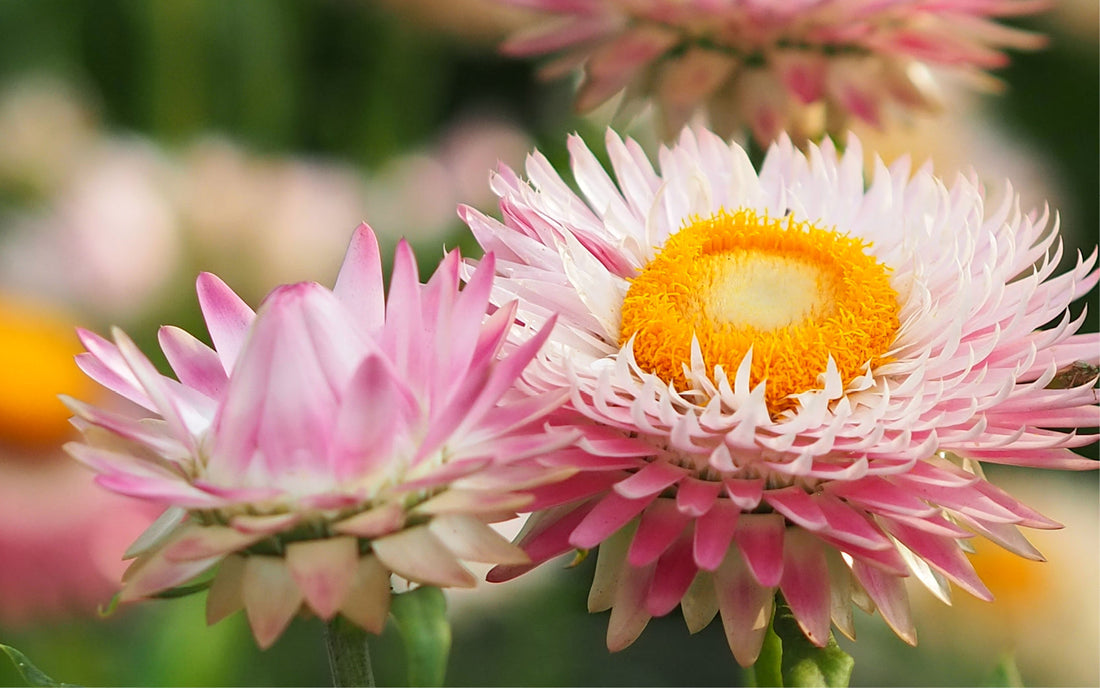Garden strawflower
The Helichrysum bracteatum is one of the most popular cut flowers for a reason. It keeps well and is easy to work with even when dried. Just make sure to cut the blossoms shortly after opening to avoid unsightly discoloration of the center. To dry, simply hang them upside down in a well-ventilated area. They make wonderful dried bouquets later.

Blossom:
The bracts are available in yellow, pink, red, violet, and white. They frame the mostly rich yellow to dark orange flower head. As the name suggests, it has a straw-like texture.
Leaves:
The leaves grow delicately elongated-lanceolate in a dark matte green.
Growth: Clump-forming with upright flowering stems. Height varies greatly depending on the variety; between 30 and 110 cm tall.
Flowering time:
July to September
Location:
Garden strawflowers prefer warm, sunny locations, especially in beds and borders. They pair well with other cut and dried flowers.
Care:
If the flowers are to be dried, they must be cut while still in bud. Unfortunately, these flowers are very susceptible to downy mildew and wilt.
Reproduction:
Sowing can take place in the cold frame in March, and then in April the seeds can be moved to the bed.
Varieties:
A distinction is made between dwarf varieties, medium-height varieties and tall varieties.
Dwarf varieties: 'Bikini' (bushy growth; 30 to 40 cm tall; colorful carpet of colors in dark red to golden yellow)
Medium-height varieties: 'Album' (white; approximately 60 cm); 'Luteum' (yellow; approximately 60 cm); 'Monstrosum' (various flower colors; approximately 75 to 90 cm)
Tall varieties: 'Elite-Sulfur Yellow' (50 to 80 cm; sulfur-yellow flowers)
TEXT: Carina Naeve











































































































